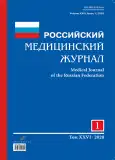Проведение сравнительной оценки переносимости и риска фармакотерапии препаратами ботулинического токсина типа а у детей с ДЦП с выраженным синдромом спастичности
- Авторы: Архипов В.В.1, Горячев Д.В.1, Чебаненко Н.В.2, Соловьева А.П.1
-
Учреждения:
- ФГБУ «Научный центр экспертизы средств медицинского применения» Министерства здравоохранения РФ
- ФГБОУ ДПО «Российская медицинская академия непрерывного профессионального образования» Министерства здравоохранения РФ
- Выпуск: Том 26, № 1 (2020)
- Страницы: 33-40
- Раздел: Клиническая фармакология и лекарственные средства
- URL: https://journals.rcsi.science/0869-2106/article/view/25838
- DOI: https://doi.org/10.18821/0869-2106-2020-26-1-33-40
- ID: 25838
Цитировать
Аннотация
В работе дана комплексная оценка мониторинга безопасности применения препаратов БТА по базам данных ВОЗ (VigiBase) и АИС «Росздравнадзор-Фармаконадзор», проведено сравнение динамики поступления сообщений.
Представленное авторами постмаркетинговое исследование отечественного опыта применения препаратов БТА (Диспорт®, Ботокс® и Ксеомин®) основано на ретроспективном клинико - фармакологическом анализе 169 медицинских карт детей с ДЦП, у которых для лечения синдрома спастичности применялись данные препараты.
Анализ спектра нежелательных явлений, упоминание о которых было в 10 (5,9%) медицинских картах, показал, что их характер соответствуют данным, изложенным в инструкциях по медицинскому применению на данные препараты. Серьезные нежелательные реакции по критериям серьезности «смерть», «угроза жизни», с высокой степенью достоверности причинно-следственной связи в ходе исследования не выявлены, что подтверждает достаточно высокий профиль безопасности данных препаратов.
В работе делается акцент на совершенствование методологии оценки эффективности и безопасности применения препаратов БТА для лечении синдрома спастичности у детей, необходимости выявления и обязательного репортирования о всех нежелательных лекарственных реакциях.
Полный текст
Открыть статью на сайте журналаОб авторах
Владимир Владимирович Архипов
ФГБУ «Научный центр экспертизы средств медицинского применения» Министерства здравоохранения РФ
Автор, ответственный за переписку.
Email: arkhipov2005@rambler.ru
ORCID iD: 0000-0002-1441-3418
д.м.н., доцент
Россия, 127051, г. Москва, Петровский бульвар, д. 8, стр. 2Дмитрий Владимирович Горячев
ФГБУ «Научный центр экспертизы средств медицинского применения» Министерства здравоохранения РФ
Email: Gorachev@expmed.ru
ORCID iD: 0000-0001-8583-2372
д.м.н.
Россия, 127051, г. Москва, Петровский бульвар, д. 8, стр. 2Наталья Владимировна Чебаненко
ФГБОУ ДПО «Российская медицинская академия непрерывного профессионального образования» Министерства здравоохранения РФ
Email: nataqwe@yndex.ru
ORCID iD: 0000-0002-7231-0249
к.м.н., доцент кафедры неврологии детского возраста
Россия, 125993, г. Москва, ул. Баррикадная, д. 2/1, стр. 1Анна Петровна Соловьева
ФГБУ «Научный центр экспертизы средств медицинского применения» Министерства здравоохранения РФ
Email: Soloviova@expmed.ru
ORCID iD: 0000-0001-9244-8934
Россия, 127051, г. Москва, Петровский бульвар, д. 8, стр. 2
Список литературы
- Змановская В.А., Левитина Е.В., Попков Д.А., Буторина М.Н., Павлова О.Л. Длительное применение препарата ботулинического токсина типа А: Диспорт® в комплексной реабилитации детей со спастическими формами паралича. Журнал неврологии и психиатрии им. С.С. Корсакова. 2014; 114(7): 33-6.
- Cote T.R., Mohan A.K., Polder J.A., Walton M.K., Braun M.M. Botulinum toxin type A injections: adverse events reported to the US Food and Drug Administration in therapeutic and cosmetic cases. J. Am. Acad. Dermatol. 2005; 53(3): 407-15. doi: 10.1016/j.jaad.2005.06.011.
- Howell K., Selber P., Graham H.K., Reddihough D. Botulinum neurotoxin A: an unusual systemic effect. J. Paediatr. Child. Health. 2007; 43(6): 499-501. doi: 10.1111/j.1440-1754.2007.01122.x.
- Kuehn B.M. FDA requires black box warnings on labeling for botulinum toxin products. JAMA. 2009; 301(22): 2316. doi: 10.1001/jama.2009.780.
- Montastruc J., Marque P., Moulis F., Bourg V, Lambert V., Durrieu G. et al. Adverse drug reactions of botulinum neurotoxin type A in children with cerebral palsy: a pharmaco-epidemiological study in VigiBase. Dev Med Child Neurol. 2017; 59(3): 329-34. doi: 10.1111/dmcn.13286.
- O’Flaherty S.J., Janakan V., Morrow A.M., Scheinberg A.M., Waugh M-CA. Adverse events and health status following botulinum toxin type A injections in children with cerebral palsy. Dev Med Child Neurol. 2011; 53(2): 125-30. doi: 10.1111/j.1469-8749.2010.03814.x.
- Naidu K., Smith K., Sheedy M., Adair B., Yu X., Graham HK. Systemic adverse events following botulinum toxin A therapy in children with cerebral palsy. Dev Med Child Neurol. 2010; 52(2): 139-44. doi: 10.1111/j.1469-8749.2009.03583.x.
- Романов Б.К., Олефир Ю.В., Аляутдин Р.Н., Глаголев С.В., Поливанов В.А., Ильенко Л.И. и др. Безопасность применения лекарственных средств у детей — данные международного мониторинга за 50 лет. Безопасность и риск фармакотерапии. 2019; 7(2): 57-64. doi: 10.30895/2312-7821-2019-7-2-57-64.
- Лечение и реабилитация детей со спастическими формами церебрального паралича. Методические рекомендации № 26. М.: 2016.
- Куренков А.Л., Бурсагова Б.И., Кузенкова Л.М., Петрова С.А. Применение ботулинического токсина типа А при спастических формах детского церебрального паралича, эффективная фармакотерапия. Эффективная фармакотерапия. 2013; (3): 14-20.
Дополнительные файлы









